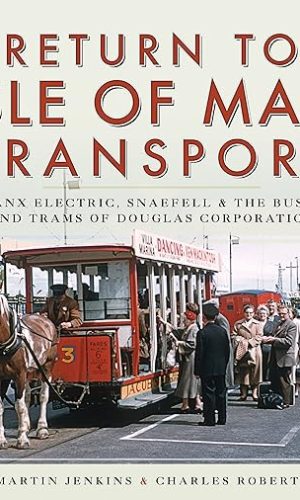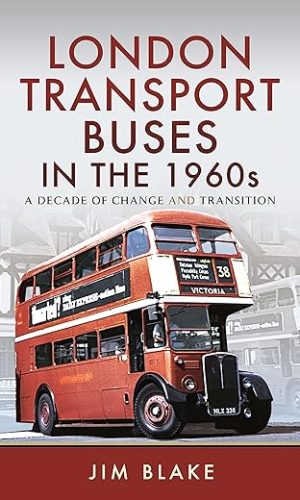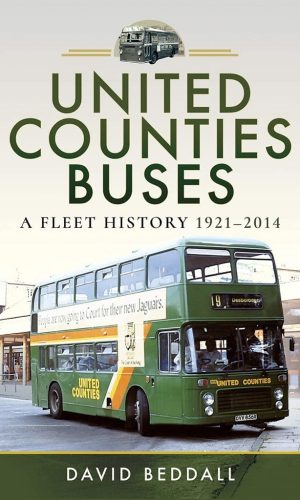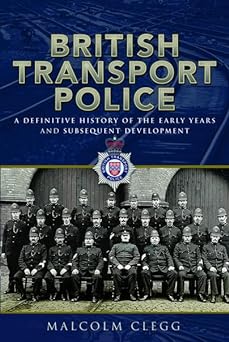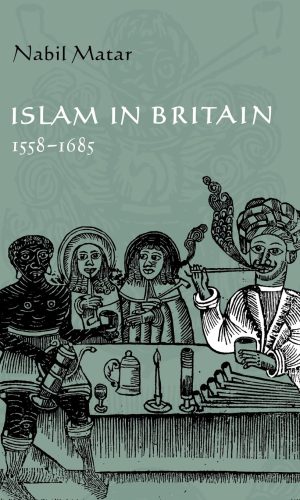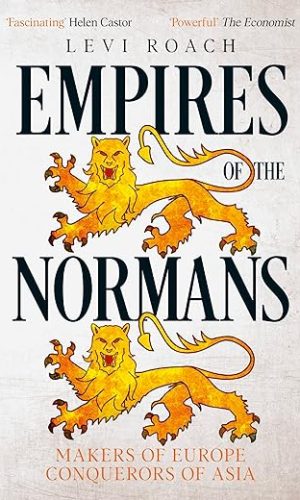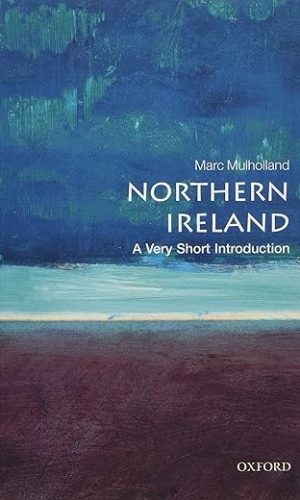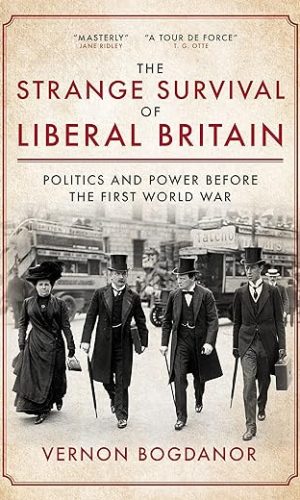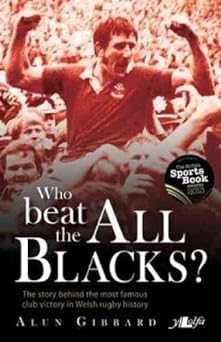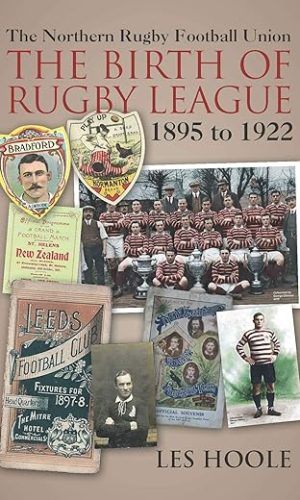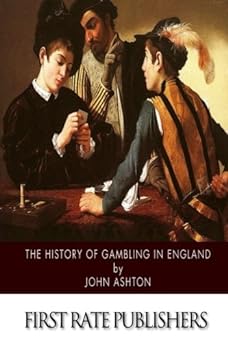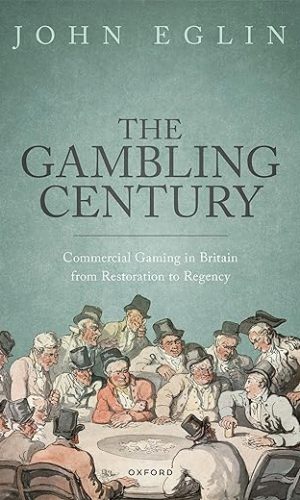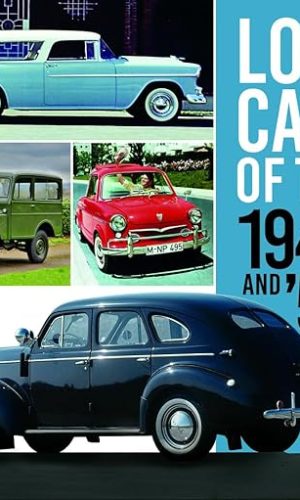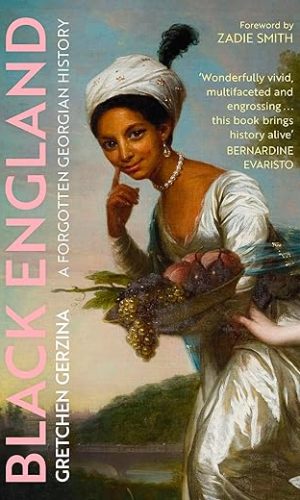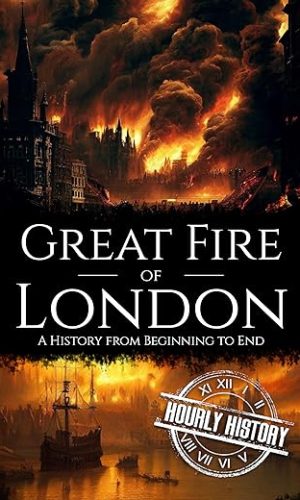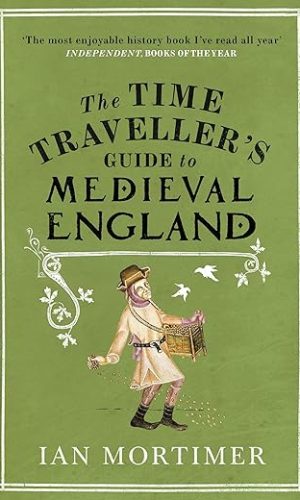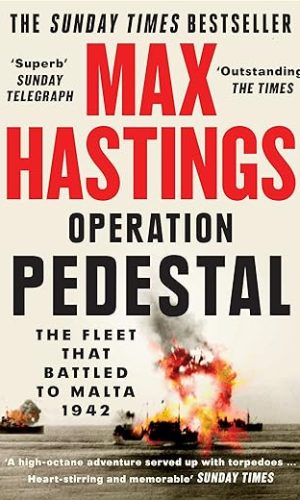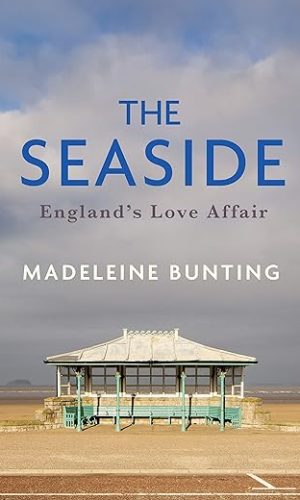Great Britain
-
Soldiers and Civilians, Transport and Provisions: Early Modern Military Logistics and Supply Systems During the British Civil Wars, 1638-1653: 108 (Century of the Soldier)
Until now historical works have neglected to fully consider the events of the British Civil Wars with respect to the logistics and supply systems. As such, this book evaluates and challenges these narratives of the wars by tackling historical debates through the lens of these logistics and supply systems at an operational level. How the military logistics and supply systems of the period functioned is revealed, including what methods of supply were used, what decisions and events these systems impacted, and how these related to strategic and tactical outcomes of the wars.The book investigates the facets of land, coastal, and riverine transportation, the supply of manpower to the armies, and the supply of food, clothing, and shelter to multiple forces across various conflicts throughout the British Civil Wars. With an application of a broad range of both civilian and military sources, this research employs archival and manuscript materials from national and local archives across the British Isles, contemporary tracts, letters, books, and pamphlets, as well as secondary literature from a variety of historical fields–from military history, economic and social studies, as well as reconstructive archaeology. As a result, the study outlines regional disparity in military logistics systems due to reliance on pre-existing civilian structures and methods–which had not been developed with a military purpose in mind and resulted in substantial logistical and supply differences that consequently, and heavily, favored one faction over another.
Many questions that have bedevilled previous historiography–and some that remain contentious even today–are likewise explored through this new perspective. This includes, but is not limited to, countering the simple narrative that Royalist armies were terribly supplied in comparison to Parliament, placing the Royalists’ Gloucester campaign in its correct strategic context, highlighting Catholic recruitment to Cromwell’s forces in Ireland, and providing a reasonable and informed explanation for Prince Rupert’s decision to fight at Marston Moor–all through the lens of logistics and supply. It emphasizes the absolute necessity of interactions between civil and military authority across multiple levels to supply early modern forces, providing a more nuanced history of civilian and military interactions than the popular view of soldiers imposing their will on a suffering population.
The book’s analysis of logistics and supply during the British Civil Wars, a focus not undertaken in such detail so far for the period, will provide a compelling read for those with interests in the operational realities of warfare during the seventeenth century more broadly, and the British Civil Wars in particular.
Read more
£25.80£33.30 -
The London Underground, 1968-1985: The Greater London Council Years
LONDON’S HISTORIC, iconic Underground railway system in the period from 1968 to 1985 was a very different place to what it is in the 2020s. Much of its rolling stock dated from before World War Two, and with the exception of the new Victoria Line and the isolated Woodford to Hainault shuttle, trains were all two-person operated as the 1970s dawned. Transport photographer Jim Blake recorded most of the system on film before it would change forever, concentrating on the older rolling stock as well as other items of interest due for replacement or modernisation, during this period when, regrettably, London Transport was often starved of much-needed funds by central government. The eminently sensible transfer of overall control of London’s buses and Underground system to the city-wide Greater London Council at the beginning of 1970 was snatched away by the Thatcher regime in 1984, after which things rapidly went downhill. This book covers the years of GLC control, including the months prior to their taking charge in order to set the scene. Many rare and unusual scenes are included in this volume, especially of the then still basically intact portion of the uncompleted Northern Line extension between Drayton Park and Highgate, which had been so close to completion when work was halted during the war, but then abandoned in the early 1950s, incurring much wasted work and expenditure. For anyone with a serious interest in London’s Underground, this book is essential reading, including as it does many pervious unpublished photographs.Read more
£20.00£23.80 -
Return to Isle of Man Transport: Manx Electric, Snaefell & the Buses and Trams of Douglas Corporation
This is the second book by Martin Jenkins and Charles Roberts, about transport in the Isle of Man. The first volume covered the railway network, where as this new volume covers all other forms, road, rail, sea and air operations. The book is illustrated, using previously unpublished rare early colour pictures, from the Online Transport Archive, which holds over a million transport images. Both the authors have managed to collect together some truly interesting and often stunning pictures, from a period when colour coverage of transport subjects was almost non existent.Read more
£8.80£23.80 -
Air Transport Auxiliary at War: 80th Anniversary of its Formation
This book looks at the invaluable work carried out by members of the Air Transport Auxiliary during the course of the Second World War. Comprised of both men and women, it was a civilian organisation tasked with the collection and delivery of military aircraft from the factories to the RAF and Royal Navy stations. Men who undertook the role had to be exempt from having to undertake war time military service due to health or age, but other than that there were very few restrictions on who who could join, which accounted for one-legged, one-armed, one-eyed and short sighted pilots being accepted. Initially it was only men who were allowed to carry out this service, but by December 1939, British authorities were persuaded by Pauline Gower (the daughter of Sir Robert Vaughan Gower, a wartime Conservative MP, and an accomplished pilot in her own right), to establish a women’s section of the Air Transport Auxiliary, of which she was put in charge. The first eight women were accepted in to the service, but it would not be until 1943 that its male and female members received the same pay. By the end of the war 147 different types of aircraft had been flown by the men and women of the Air Transport Auxiliary, including Spitfire fighter aircraft and Lancaster bombers. These brave pilots were not just British, but came from 28 Commonwealth and neutral countries and their efforts sometimes came at a price: 174 Air Transport Auxiliary pilots, both men and women, died during the war whilst flying for the service.Read more
£11.60£14.20 -
London Transport Buses in the 1960s: A Decade of Change and Transition
Just as life in Britain generally changed dramatically during the 1960s, so did London Transport’s buses and their operations. Most striking was the abandonment of London’s trolleybuses, once the world’s biggest system, and their replacement by motorbuses. Begun in 1959 using surplus RT-types, it was completed by May 1962 using new Routemasters, designed specifically to replace them. They then continued to replace RT types, too. Traffic congestion and staff shortages played havoc with London Transport’s buses and Green Line coaches during the 1960s, one-man operation was seen as a remedy for the latter, shortening routes in the Central Area for the former. Thus the ill-fated “Reshaping Plan” was born, introducing new O.M.O. bus types. These entered trial service in 1965, and after much delay the plan was implemented from September 1968 onwards. Sadly, new MB-types, also introduced in the Country Area, soon proved a disaster! Unfortunately, owing to a government diktat, Routemaster production ended at the start of 1968, forcing LT to buy “off-the-peg” vehicles unsuited to London operation and their in-house overhaul procedures. The decade ended with the loss of LT’s Country Area buses and Green Line coaches to the National Bus Company. Photographer Jim Blake began photographing London’s buses towards the end of the trolleybus conversion programme in 1961 and continued dealing with the changing scene throughout the decade. He dealt very thoroughly with the “Reshaping” changes, and many of the photographs featured herein show rare and unusual scenes which have never been published before.Read more
£20.00£23.80 -
United Counties Buses: A Fleet History, 1921-2014
United Counties Buses – A Fleet History begins by taking a brief look at the expansion of the United Counties Omnibus Company since its formation in September 1921 through to its demise in October 2014. The company acquired over fifty independent operators between 1922 and 1938 giving the company prominence in Northamptonshire and surrounding areas. May 1952 saw the fleet double in size with the acquisition of the Midland area of the Eastern National Omnibus Company, encompassing Bedfordshire, north Buckinghamshire and north Hertfordshire. The National Bus Company split United Counties into three operating companies in 1986, United Counties, Luton & District and MK Citybus, halving the size of the fleet. After being acquired by the Stagecoach Group in 1987, the company was largely left untouched. The main focus of the book looks at the vehicles operated by the company, covering the numerous types operated by United Counties themselves. The various liveries, both fleet and advertising liveries are also listed with in the book.Read more
£14.20£28.50United Counties Buses: A Fleet History, 1921-2014
£14.20£28.50 -
On the Road to Victory: The Rise of Motor Transport with the BEF on the Western Front
The story of a revolution in moving troops and supplies: “A rare gem that will fill a gap in your World War I library. Highly recommended.” —Indy Squadron DispatchThe Great War produced many innovations, in particular the spectacular development by the British and French armies of motor transport.
The age-old problem of moving soldiers and their supplies was no different in 1914 than it had been some 2,400 years ago, when the great Chinese military thinker Sun Tzu informed his readers that the further an army marched into enemy territory, the more the cost of transport increased, even to the point that more supplies were consumed by the transportation of men and their horses than was delivered to the troops.
Using many previously unpublished illustrations, including artists’ impressions, this book tells the story of the men and women who made motor transport work for the victorious British Army on the Western Front, so that in 1918, the humble lorry did indeed help propel the British Army forward on the road to victory.
Read more
£4.70 -
British Transport Police: A definitive history of the early years and subsequent development
This book traces the history of the British Transport Police, the National Police Force responsible for policing the railways of England, Scotland and Wales. The roots of the Force go back almost 200 years, starting with the development of the railways during the Nineteenth Century. Hundreds of railway companies were founded and although mergers and amalgamations took place, by the end of the century, well over 100 railway companies were operating, most of which employed railway policemen. The first railway policemen were recruited to work on the Stockton and Darlington Railway in 1826. Other railway companies quickly followed and by the 1850s, railway policemen with their smart uniforms and top hats were a common sight on Britain’s railways. During the Twentieth Century, railway companies continued to merge before being nationalised in 1948. The following year, the British Transport Commission (BTC) was created to oversee not only the newly nationalised railway network, but also the nation’s docks, shipping, inland waterways, road transport, road haulage and other companies. Also in 1949, the British Transport Commission Police (BTC Police) was created to take over the policing of these newly nationalised institutions. All the former railway, dock and canal police forces were then absorbed into the new BTC Police Force. The BTC was abolished in 1962, having incurred serious financial losses. The BTC Police was renamed the British Transport Police in 1963 and has continued to operate ever since. It no longer polices the docks, harbours and canals for reasons outlined in this book.Read more
£20.00£23.80 -
Buses in South and West Yorkshire
The Metropolitan counties of South and West Yorkshire have some of the most intensive bus operations outside Birmingham and London. The former metropolitan counties include considerable amounts of rural terrain alongside densely populated urban areas. Author Peter Tucker takes us on a lively photographic tour of the region’s transport scene. The journey takes us everywhere from genteel towns like Horsforth, Ilkley and Wetherby down to areas of heavy industry such as the Don Valley in Sheffield. In between we visit places as contrasting as Barnsley, Dewsbury, Pontefract and Rotherham and Swinton. Yorkshire’s cosmopolitan cities are not forgotten either, as we explore Bradford, Leeds, Sheffield and Wakefield. Featuring operators such as Arriva, First and Stagecoach, this publication also looks back to the 1990s with photographs depicting buses of the now defunct Yorkshire Rider, Yorkshire Traction and West Riding.Read more
£11.70£15.20Buses in South and West Yorkshire
£11.70£15.20 -
British Buses Since 1950: Trendsetting Designs (Britain’s Buses Series)
Bus design has certainly evolved in the seven decades since 1950, but it has not been a steady process. Advances in bus design have caused manufacturers to rush back to the drawing board for fear of being left behind. In 1950, the first of the new breed of underfloor-engined single-deckers appeared, and, just six years later, came the first rear-engined double-decker. Buses got longer, and one result in the 1960s was a rash of new rear-engined single-deck models. Efforts to make buses accessible for all passengers led to low-floor models in the 1990s, and then, in the 2000s, concerns about the environment prompted diesel-electric hybrid, gas, electric and hydrogen buses. Covering the designs that led the way with varying degrees of success over the past 70 years, and illustrated with over 170 colour images and period advertisements, this book showcases the good, the bad and the ugly of British bus design.Read more
£6.20 -
Islam in Britain, 1558-1685
This book examines the impact of Islam on Britain between 1558 and 1685. Professor Matar provides a perspective on the transformation of British thought and society by demonstrating how influential Islam was in the formation of early modern British culture. Christian-Muslim interaction was not, as is often thought, primarily adversarial; rather, there was extensive cultural, intellectual and missionary engagement with Islam in Britain. The author documents conversion both to and from Islam, and surveys reactions to these conversions. He examines the impact of the Qur’an and Sufism, not to mention coffee, on British culture, and cites extensive interaction of Britons with Islam through travel, in London coffee houses, in church, among converts to and from Islam, in sermons and in plays. Finally, he focuses on the theological portrait of Muslims in conversionist and eschatological writings.Read more
£36.10Islam in Britain, 1558-1685
£36.10 -
Empires of the Normans: Makers of Europe, Conquerors of Asia
‘Powerful’ The Economist
‘Fascinating, panoramic . . . Roach brings an expert eye and page-turning energy’ Helen Castor, bestselling author of She Wolves
‘Narrated with pace, clarity, authority and style, Roach’s book is a bracing tour of the world that the Normans made their own’ Thomas Williams, bestselling author of Viking Britain
‘A fresh retelling . . . written with enthusiasm and brio’ Marc Morris, bestselling author of The Anglo-Saxons
How did descendants of Viking marauders come to dominate Europe, the Mediterranean and the Middle East?
It is a tale of ambitious adventures and fierce freebooters, of fortunes made and fortunes lost. The Normans made their influence felt across all of western Europe and the Mediterranean, from the British Isles to North Africa, and Lisbon to the Holy Land. In Empires of the Normans we discover how they combined military might and political savvy with deeply held religious beliefs and a profound sense of their own destiny. For a century and a half, they remade Europe in their own image, and yet their heritage was quickly forgotten – until now.
Read more
£4.70 -
Culture, Politics and Sport: Britain in the 20th Century: Bitesize Britain (Bitesize Britain: Britain in the 20th Century)
Explore the captivating journey of Britain through the 20th century with “Culture, Politics and Sport: Britain in the 20th Century”. This compelling book takes readers on a unique voyage through time, offering bite-sized chunks of social history that delve into the cultural, political, and sporting landscapes of each decade. From the dawn of the new century to the eve of the new millennium, this bite-sized guide provides an insightful and engaging account of Britain’s transformation over 100 years. Each decade is explored in a dedicated chapter, allowing readers to gain an understanding of the key events, societal shifts, and influential figures that shaped Britain. From the Roaring Twenties to the swinging 1960s and from the turbulent 1980s to the dawn of the digital age, the book offers a panoramic view of the nation’s social fabric.
The book seamlessly weaves together the intertwined threads of culture, politics and sport, revealing their impact on the British society throughout the 20th century. Discover how the arts, music, and literature evolved, reflecting the changing values and aspirations of the people. Uncover the political upheavals that shaped the nation, from the suffrage movement and the rise and fall of political ideologies to the transformative post-war welfare state. And dive into the world of British sport, where heroes were made, records were broken, and moments of triumph and heartbreak captured the nation’s spirit.
Through a combination of engaging storytelling and concise historical analysis, “Culture, Politics and Sport: Britain in the 20th Century” brings history to life. Whether you’re a history enthusiast or simply curious about the past, this book provides a fascinating exploration of the transformative events and social dynamics that have shaped modern Britain.
Read more
£14.20 -
Boom Cities: Architect Planners and the Politics of Radical Urban Renewal in 1960s Britain
Boom Cities is the first published history of the profound transformations of British city centres in the 1960s.It has often been said that urban planners did more damage to Britain’s cities than even the Luftwaffe had managed, and this study details the rise and fall of modernist urban planning, revealing its origins and the dissolution of the cross-party consensus, before the ideological smearing that has ever since characterized the high-rise towers, dizzying ring roads, and concrete precincts that were left behind.
The rebuilding of British city centres during the 1960s drastically affected the built form of urban Britain, including places ranging from traditional cathedral cities through to the decaying towns of the industrial revolution. Boom Cities uncovers both the planning philosophy, and the political, cultural, and legislative background that created the conditions for these processes to occur across the country.
Boom Cities reveals the role of architect-planners in these transformations. The volume also provides an unconventional account of the end of modernist approaches to the built environment, showing it from the perspective of planning and policy elites, rather than through the emergence of public opposition to planning.
Read more
£22.60 -
Northern Ireland: A Very Short Introduction (Very Short Introductions)
From the Plantation of Ulster in the seventeenth century to the entry into peace talks in the late twentieth century the Northern Irish people have been engaged in conflict – Catholic against Protestant, Republican against Unionist. The traumas of violence in the Northern Ireland Troubles have cast a long shadow. For many years, this appeared to be an intractable conflict with no pathway out. Mass mobilisations of people and dramatic political crises punctuated a seemingly endless succession of bloodshed. When in the 1990s and early 21st century, peace was painfully built, it brought together unlikely rivals, making Northern Ireland a model for conflict resolution internationally.But disagreement about the future of the province remains, and for the first time in decades one can now seriously speak of a democratic end to the Union between Northern Ireland and Great Britain as a foreseeable possibility. The Northern Ireland problem remains a fundamental issue as the United Kingdom recasts its relationship with Europe and the world. In this completely revised edition of his Very Short Introduction Marc Mulholland explores the pivotal moments in Northern Irish history – the rise of republicanism in the 1800s, Home Rule and the civil rights movement, the growth of Sinn Fein and the provisional IRA, and the DUP, before bringing the story up to date, drawing on newly available memoirs by paramilitary militants to offer previously unexplored perspectives, as well as recent work on Nothern Irish gender relations. Mulholland also includes a new chapter on the state of affairs in 21st Century Northern Ireland, considering the question of Irish unity in the light of both Brexit and the approaching anniversary of the 1921 partition, and drawing new lessons for the future.
ABOUT THE SERIES: The Very Short Introductions series from Oxford University Press contains hundreds of titles in almost every subject area. These pocket-sized books are the perfect way to get ahead in a new subject quickly. Our expert authors combine facts, analysis, perspective, new ideas, and enthusiasm to make interesting and challenging topics highly readable.
Read more
£7.10£8.50 -
The Strange Survival of Liberal Britain: Politics and Power Before the First World War
“Masterly … A fascinating tour d’horizon of the Edwardian political scene. This must be a definitive account.” – Professor Jane Ridley, author of George V: Never a Dull Moment
“A tour de force, sympathetic in its treatment of the subject, eminently wise in its judgement and invariably fair in its verdicts. It purrs along like a Rolls-Royce engine.” – Professor T. G. Otte, author of Statesman of Europe: A Life of Sir Edward Grey
“This brilliant book from Britain’s most important constitutional historian upends the orthodoxy about the decadent Edwardians. A masterpiece of intelligent history, both forceful and subtle, which transforms how we view not just those most complex Edwardians but also our own equally complex times.” – Professor Richard Aldous, author of The Lion and the Unicorn: Gladstone vs Disraeli
“Brilliant. Instantly the leading history of this turbulent and critical period in Britain’s transition towards a modern democracy.” – Professor Robert Blackburn, King’s College London
“Vernon Bogdanor has the habit of unearthing gems that have been missed by others. He does it again in this magisterial work on post-Gladstonian Britain by challenging some of the long-established myths about this period that deserve to be cast aside.” – Professor Malcolm Murfett, King’s College London
“Professor Bogdanor argues with conviction and sometimes passion but always with judiciousness and in the light of deep reflection. The result is a masterly work which speaks to the politics of our own time.” – Alvin Jackson, Richard Lodge Professor of History, University of Edinburgh
“An extraordinary exploration of a political world whose dynamics continue to shape the future of liberal constitutionalism.” – Bruce Ackerman, Sterling Professor of Law and Political Science, Yale University
“Crisp, authoritative and lucid.” – Nicholas Owen, associate professor of politics, University of Oxford
The turbulent years of 1895 to 1914 changed Britain’s political landscape for ever. They saw a transition from aristocratic rule to mass politics and heralded a new agenda which still dominates today. The issues of the period – economic modernisation, social welfare and equality, secondary and technical education, a new role for Britain in the world – were complex and difficult. Indeed, they proved so thorny that despite the efforts of the Edwardians they remain among the most pressing problems we face in the twenty-first century.
The period has often been seen as one of decadence, of the strange death of liberal Britain. In contrast, Vernon Bogdanor believes that the robustness of Britain’s parliamentary and political institutions and her liberal political culture, with the commitment to rational debate and argument, were powerful enough to carry her through one of the most trying periods of her history and so make possible the remarkable survival of liberal Britain.
In this wide-ranging and sometimes controversial survey, one of our pre-eminent political historians dispels the popular myths that have grown up about this critical period in Britain’s story and argues that it set the scene for much that is laudable about our nation today.
Read more
£8.50£33.30 -
Now That’s What I Call a History of the 1980s: Pop Culture and Politics in the Decade That Shaped Modern Britain
Now that’s what I call a history of the 1980s tells the story of eighties Britain through its popular culture. Charting era-defining moments from Lady Diana’s legs and the miners’ strike to Glastonbury’s Pyramid Stage and Adam and the Ants, Lucy Robinson weaves together an alternative history to the one we think we know. This is not a history of big geopolitical disasters, or a nostalgic romp through discos, shoulder pads and yuppie culture. Instead, the book explores a mashing together of different genres and fan bases in order to make sense of our recent past and give new insights into the decade that defined both globalisation and excess. Packed with archival and cultural research but written with verve and spark, the book offers as much to general readers as to scholars of this period, presenting a distinctive and definitive contemporary history of 1980s Britain, from pop to politics, to cold war cultures, censorship and sexuality.Read more
£12.30£14.20 -
Who Beat the All Blacks?: The story behind the most famous club victory in Welsh rugby history
A new edition to commemorate the 50th anniversary of one of the greatest rugby moments ever. Against all expectations, on 31 October 1972 Carwyn James Llanelli beat New Zealand 9-3. The day’s events are recalled by those who were there. First edition shortlisted for 2013 British Sports Book Awards.Read more
£9.50 -
This is Your Everest: The Lions, The Springboks and the Epic Tour of 1997
‘A rollicking read and a mighty achievement’ – Donald McRae, The Guardian
The 1997 British & Irish Lions tour to South Africa is one of the most iconic in rugby history. Written off at home and abroad, Martin Johnson’s men were given no hope of success against the world champion Springboks in their own backyard. But a combination of brilliant coaching, astute selections and outstanding players laid the foundations for the touring side’s outstanding attacking mindset and brutal stonewall defence.
On the other side was a team expected to stamp their authority on the tourists and confirm their place as the best side on the planet. But with political, racial and economic scandals swirling around the Springbok camp, plus a rookie coach parachuted into office just before the tour began, the hosts were under huge pressure.
In a Test series that will go down in legend as one of the most compelling of all time, the sides could barely be separated. This is the inside story from both camps as they battle for supremacy, lifting the lid like never before as a huge cast of characters look back on those extraordinary weeks and the impact it had on their lives and careers thereafter. Hilarious, insightful and spine-chilling, Tom English and Peter Burns provide the perfect read for all Lions fans.
Read more
£14.50£17.10 -
Behind the Thistle: Playing Rugby for Scotland (Behind the Jersey Series)
Featuring the thoughts of more than 180 players who have represented Scotland since the very first Test match in 1871 all the way through to the present day, Behind the Thistle gives a unique insight into the drama and emotion of playing for Scotland in that most rarefied of environments – Test match rugby.
In this exhaustively research tome, David Barnes and Peter Burns provide inside access to more than 150 years of private moments in the changing room, on tour, on the training ground, during the tumultuous heat of battle itself, and lift the lid on numerous post-match antics.
This is the story of what it is really like to play for Scotland, revealing the sacrifices and joys experienced by those who have shed blood, sweat and tears in pursuit of glory in the navy blue jersey.
Read more
£11.90£12.30 -
The Northern Rugby Football Union. The Birth of Rugby League. 1895 to 1922: The Birth of Rugby League 1895-1922
On Thursday 29th August 1895, 21 of the leading rugby union clubs of Lancashire and Yorkshire met at the George Hotel in Huddersfield to discuss their long running disagreement with the rugby football union. Little did they know what was to follow. The clubs decided that they had suffered enough of the control of the southern gentry and formed their own northern rugby football union and split from the rugby football union. It was the beginning of a dispute that would continue for almost a hundred years. The new northern union thrived, and many clubs soon joined, however, with little coherent strategy or assistance from the union, many folded within a few years. The stronger clubs and the union itself survived those initial chaotic times and continued to create the structure and competitions that have evolved to create the game of rugby league football we know today. This new book illustrates the birth of the northern union in 1895 to the 1922 name change to the rugby league with hundreds of rare images of the early teams and individuals who had the courage to take that enormous leap in the dark.Read more
£12.20£14.20 -
The Red Roses: Behind the Scenes with the England Women’s Rugby Team
In January 2019, England’s Red Roses became the first fully-professional women’s rugby team in the world with one mission: win back the Rugby World Cup. In 2017, they lost the final 41-32 against New Zealand. With the 2021 tournament delayed by one year due to Covid, the team had five years to complete their mission and over three years as a fully professional side. As a professional unit, the Red Roses developed a game plan so forensic and impenetrable, they secured the longest winning streak in rugby union history.
The Red Roses headed into the 2021 Rugby World Cup as clear favourites. After a clean sweep in the pool stages, and big wins in the knock-out games, England faced New Zealand, the hosts, in the final. One year before, England had defeated them with record-breaking score lines on consecutive weekends and all eyes were on Sarah Hunter, England captain, with the expectation she would lift the trophy.
Yet in the final play of the game, New Zealand stole the victory so many saw as promised to England. The Red Roses will host the Rugby World Cup in 2025, and the stakes have never been higher. Can they finally win back the trophy?
Read more
£16.10 -
Rugby Lives: The stories of 25 Welsh internationals in their own words
A collection of in-depth interviews from one of Wales’ best rugby journalists, looking back on the careers of 26 of Welsh rugby’s finest players.Read more
£11.30£12.30 -
Gambling in Britain in the Long Eighteenth Century
English society in the eighteenth century was allegedly marked by a ‘gambling mania’, such was the prevalence and intensity of different forms of ‘gaming’. Gambling in Britain in the Long Eighteenth Century subjects this notion to systematic scrutiny, exploring the growth and prevalence of different forms of gambling across Britain and throughout British society in this period, as well as attitudes towards it. Drawing on a vast range of new, empirical evidence, Bob Harris seeks to understand gambling, its growth, and significance within the context of wider trends and impulses in society. This book asks what light gambling practices and habits shed back onto society and the values, hopes, and expectations that informed the lives of those involved. This is a book, therefore, as much about the character of British society in the long eighteenth century as it is about gambling itself.Read more
£67.70 -
The History of Gambling in England
This is a history of different types of gambling over the centuries in England, from cards to horse races. From the intro: “Gaming is derived from the Saxon word Gamen, meaning joy, pleasure, sports, or gaming—and is so interpreted by Bailey, in his Dictionary of 1736; whilst Johnson gives Gamble—to play extravagantly for money, and this distinction is to be borne in mind in the perusal of this book; although the older term was in use until the invention of the later—as we see in Cotton’s Compleat Gamester (1674), in which he gives the following excellent definition of the word:—“Gaming is an enchanting witchery, gotten between Idleness and Avarice: an itching disease, that makes some scratch the head, whilst others, as if they were bitten by a Tarantula, are laughing themselves to death; or, lastly, it is a paralytical distemper, which, seizing the arm, the man cannot chuse but shake his elbow. It hath this ill property above all other Vices, that it renders a man incapable of prosecuting any serious action, and makes him always unsatisfied with his own condition; he is either lifted up to the top of mad joy with success, or plung’d to the bottom of despair by misfortune, always in extreams, always in a storm; this minute the Gamester’s countenance is so serene and calm, that one would think nothing could disturb it, and the next minute, so stormy and tempestuous that it threatens destruction to itself and others; and, as he is transported with joy when he wins, so, losing, is he tost upon the billows of a high swelling passion, till he hath lost sight, both of sense and reason.” Gambling, as distinguished from Gaming, or playing, I take to mean an indulgence in those games, or exercises, in which chance assumes a more important character; and my object is to draw attention to the fact, that the money motive increases, as chance predominates over skill. It is taken up as a quicker road to wealth than by pursuing honest industry, and everyone engaged in it, be it dabbling on the Stock Exchange, Betting on Horse Racing, or otherwise, hopes to win, for it is clear that if he knew he should lose, no fool would embark in it. The direct appropriation of other people’s property to one’s own use, is, undoubtedly, the more simple, but it has the disadvantage of being both vulgar and dangerous; so we either appropriate our neighbour’s goods, or he does ours, by gambling with him, for it is certain that if one gains, the other loses. The winner is not reverenced, and the loser is not pitied. But it is a disease that is most contagious, and if a man is known to have made a lucky coup, say, on the Stock Exchange, hundreds rush in to follow his example, as they would were a successful gold field discovered—the warning of those that perish by the way is unheeded.”Read more
£5.20 -
The Gambling Century: Commercial Gaming in Britain from Restoration to Regency
Gambling captures as nothing else the drama of the “long eighteenth century” between the age of religious wars and the age of revolutions. The society that was confronted with games of chance pursued as commercial ventures also came to grips with unprecedented social mobility, floated by new wealth from new sources that created fortunes from trade in sugar, cotton, ivory, silk, tea, or enslaved human beings. Likewise, play for money was prominent in the
public imagination as money itself, deployed through an ever expanding and ever more sophisticated range of mechanisms, increasingly invaded public awareness, as when prospective spouses in period fiction were rated in terms of annual income as if they were municipal bonds. Similarly, the archetypal figure of the
gambler captured the imagination of the public in fiction, media, and politics. At the same time, new interest in science, technology, engineering, and mathematics – encouraged and bankrolled by those in power – fostered a new and unprecedented appreciation for mathematical probability and its applications, opening the possibility that games of chance might be pursued as a profitable commercial venture.The Gambling Century focuses like no previous work on those who enabled, facilitated, and profited from gambling, as well as on efforts to regulate or outlaw it. Using extensive archival material as well as printed sources, it follows its subjects from the Court to the coffeehouse, to private clubs and “at homes” in townhouses, all of which prefigure that quintessentially modern gambling space, the casino.
Read more
£19.80 -
Most Secret War (Penguin World War II Collection)
Reginald Jones was nothing less than a genius. And his appointment to the Intelligence Section of Britain’s Air Ministry in 1939 led to some of the most astonishing scientific and technological breakthroughs of the Second World War.
In Most Secret War he details how Britain stealthily stole the war from under the Germans’ noses by outsmarting their intelligence at every turn. He tells of the ‘battle of the beams’; detecting and defeating flying bombs; using chaff to confuse radar; and many other ingenious ideas and devices.
Jones was the man with the plan to save Britain and his story makes for riveting reading.Read more
£11.40£14.20Most Secret War (Penguin World War II Collection)
£11.40£14.20 -
Britain’s Most Eccentric Sports
Britain is a nation of good sports – literally, it turns out, given our country’s wonderful array of eccentric and bizarrely inventive pastimes. Yes, we know New Zealand are good at rugby, Brazil at football, while Australia and South Africa were countries specifically created for people who take sport far too seriously, but have those sporty nations ever produced a World Champion Pie Eater (OK, Shane Warne notwithstanding)? Has Brazil provided a F1 Pram Racing world champ? Has an Aussie won the World Nettle Eating Championship? A New Zealander tossed his way to Haggis Hurling domination? I can’t hear you Johnny Foreigner, and I’m choosing to interpret your silence as a ‘no’. Because the truth is, ladies and gentlemen of this great, mighty and resilient sporting land we call both Britain and home, we have provided year after year, true world champions in cheese rolling, competitive ploughing, medieval football re-enactment and pram racing. We may not have produced a Wimbledon Champion since the… er… the Wars of the Roses, but put down your Jules Rimet trophy Brazil, hand back your Rugby World Cup South Africa, and pick up your flonking stick – it’s time to learn about the sports that really matter.
Read more
£3.40 -
Lost Cars of the 1940s and ’50s
Sixty diverse cars, sixty fascinating stories, sixty contrasting specifications, just one uniting factor: they’re all forgotten, neglected or misunderstood classics.
Motoring in the 1940s and ’50s spanned from post-war austerity to the you’ve-never-had-it-so-good era. It was a time when engines gained more power, suspension became more cosseting, the chassis frame was rendered a thing of the past, and styling followed jet fighters and later space rockets. Many cars found success across the world, but others barely got off the ground and quickly vanished from our collective consciousness.
In Lost Cars of the 1940s and ’50s, award-winning author Giles Chapman presents an all-new selection of the intriguing strays of the car world. Rarely seen archive and contemporary images bring daring new designs, economy models and some extraordinary luxury cars back to life … even if they misfire once again in the process.
Read more
£17.40£19.00Lost Cars of the 1940s and ’50s
£17.40£19.00 -
The Classic Car Spotters’ Guide: What to See at Britain’s Car Shows
Not so many years ago most of the cars featured in this book were familiar sights on Britain’s roads. Now, the remaining examples – the ones that weren’t crashed, bashed, thrashed, stolen or scrapped – are reminders of simpler times and simpler technology.
During Britain’s spring and summer, thousands of owners polish their cherished motors before driving them to classic car shows and lining them up for inspection by an adoring public. Cars that were once seen so often they blended into the street furniture are now rare enough to rub fenders with the more obvious classics of the age. There are 1.5 million older motors that are still regularly driven around Britain today, and The Classic Car Spotters’ Guide takes you through more than fifty prime examples, from Ford Cortinas and Austin 1100s to Borgward Isabellas and Austin Nash Metropolitans. Complete with rarity ratings and backstories for each one, this book is the perfect companion for your next event.
Read more
£11.70£14.20 -
An Historical Map of Cambridge: University and County Town (Town & City Historical Maps)
A full colour map, based on a digitised OS map of Cambridge published in 1927, with its medieval, Georgian, Victorian and Edwardian past overlain and important buildings picked out. Cambridge is one of England’s two ancient university towns. It was an important trading centre for the Romans and then the Anglo-Saxons. The town was the location for a castle built on rising ground above the flood plain of the River Cam, by William I in about 1068. In about 1209 the first students of what was to become the University arrived from Oxford, and the first college (Peterhouse) was founded in 1284. The city (it became a city only in 1951) is home to some of the best-known and most familiar university buildings in the country including King’s College Chapel, the University Church and the Senate House, Trinity College’s Wren Library and the Victorian chapel of St John’s College. From the 16th century, many of the colleges created extensive grounds along both sides of the river, resulting in the famous Cambridge ‘Backs’ of today. But the town was also the county town of Cambridgeshire with a Shire Hall, and it developed its own identity and status as a town through various charters, with a guildhall to serve its local government. It transformed from a service economy supporting the university, with a substantial publishing presence, when, in the 19th century, it developed an industrial base (milling, malting, brewing, iron-founding, brick-making and cement manufacture); it also became a major railway centre. As a result, its suburbs expanded, especially to the east of the town centre. The historical map shows the sites of the town’s major buildings, both existing in 1927 and lost by then, its vanished medieval buildings, the site of the castle and shire hall. The map’s cover has a short introduction to the town’s history, and on the reverse an illustrated and comprehensive gazetteer of Cambridge’s main sites of historical interest.Read more
£8.90 -
Tudor History: A Captivating Guide to the Tudors, the Wars of the Roses, the Six Wives of Henry VIII and the Life of Elizabeth I (Key Periods in England’s Past)
If you want to discover the captivating history of the Tudors, then keep reading…Four captivating manuscripts in one book:
- The Tudors: A Captivating Guide to the History of England from Henry VII to Elizabeth I
- The Wars of the Roses: A Captivating Guide to the English Civil Wars That Brought down the Plantagenet Dynasty and Put the Tudors on the Throne
- The Six Wives of Henry VIII: A Captivating Guide to Catherine of Aragon, Anne Boleyn, Jane Seymour, Anne of Cleves, Catherine Howard, and Katherine Parr
- Elizabeth I: A Captivating Guide to the Queen of England Who Was the Last of the Five Monarchs of the House of Tudor
Five Tudor monarchs sat on the throne of England and Ireland from 1485 to 1603. The family earned their royal rights through strategic planning and battlefield prowess, and kept them because of intellect, strength and sheer determination. The Tudors, one of England’s most powerful and famous royal dynasties, knitted together a fragmented and small island nation that became one of the world’s financial, colonial and technological superpowers.
There is so much more to the story of these kings and queens than beheadings, political marriages and the reformation of the church – but those events remain some of the family’s most enthralling moments.
Some of the topics covered in part 1 of this book include:
- The Tudors of Wales
- The Wars of the Roses
- Catherine of Valois, Mother of the Tudor Dynasty
- Margaret Beaufort, Second Tudor Matriarch
- King Henry VII
- Arthur Tudor
- King Henry VIII
- Margaret Tudor, Sister of Henry VIII
- Mary Tudor, Queen of France
- The Birth of the Church of England
- King Henry VIII: Wives Two and Three
- King Henry VIII: The Last Three Wives
- King Edward VI
- The Nine Days’ Queen, Jane Grey
- Elizabeth Tudor
- Mary Stuart, Queen of Scots
- And much more!
Some of the topics covered in part 2 of this book include:
- A Short History of the House of Plantagenet
- Civil War in France
- England’s Loss and a King’s Illness
- Treason by the Duke of York
- The Battle of Northampton
- Margaret’s Army
- Mortimer’s Cross and the Battle of Towton
- York Takes the Throne
- The King in the Tower
- The Kingmaker Repents
- The Battles of Barnet and Tewkesbury
- The Death of a King
- The Final Plantagenet Kings
- Richard III and the Princes in the Tower
- The Battle of Bosworth
- The Foundation of the Tudor Dynasty
- Attempts on the Tudor Throne
- The Sainthood and Cult of King Henry VI
- The Legacy of the Wars of the Roses
- And much, much more!
Some of the topics covered in part 3 of this book include:
- Henry Tudor
- Catherine of Aragon
- Mistress Elizabeth Blount
- Mistress Mary Boleyn
- Anne Boleyn
- Anne of Cleves
- Mistress Mary Shelton
- The Wooing of Jane Seymour
- Catherine Howard
- The Culpeper Affair
- Katherine Parr
- More Theories on Henry Tudor’s Fertility
- The Illegitimate Children of Henry VIII
- And much more!
Some of the topics covered in part 4 of this book include:
- The Birth of a Future Queen
- From Princess to Lady
- Elizabeth and the Royal Stepmothers
- The Teenaged Princess
- A Flurry of Successions
- Queen Elizabeth I
- Sir Francis Drake and the Elizabethan Settlements
- Mary, Queen of Scots and War with Spain
- Arts and Culture in Elizabethan England
- The End of the Tudor Dynasty
- And much, much more!
So if you want to learn more about Tudor history, click the “add to cart” button!
Read more
£13.10 -
A Short History of England: Simon Jenkins
From the invaders of the dark ages to the aftermath of the coalition, one of Britain’s most respected journalists, Simon Jenkins, weaves together a strong narrative with all the most important and interesting dates in a book that characteristically is as stylish as it is authoritative.
A Short History of England sheds light on all the key individuals and events, bringing them together in an enlightening and engaging account of the country’s birth, rise to global prominence and then partial eclipse.There have been long synoptic histories of England but until now there has been no standard short work covering all significant events, themes and individuals.
Now updated to take in the rapid progress of recent events and beautifully illustrated, this magisterial history will be the standard work for years to come.
Read more
£4.70£9.50A Short History of England: Simon Jenkins
£4.70£9.50 -
A Classless Society: Britain in the 1990s
“Superb” NICK COHEN, author of What’s Left?
“Tremendously entertaining” DOMINIC SANDBROOK, Sunday Times
“Like his previous histories of the Seventies and Eighties, A Classless Society is an extraordinarily comprehensive work. Turner writes brilliantly, creating a compelling narrative of the decade, weaving contrasting elements together with a natural storyteller’s aplomb… engaging and unique” IRVINE WELSH, Daily Telegraph
“Ravenously inquisitive, darkly comical and coolly undeceived… Turner is a master of the telling detail” CRAIG BROWN, Mail on Sunday
When Margaret Thatcher was ousted from Downing Street in November 1990 after eleven years of bitter social and economic conflict, many hoped that the decade to come would be more ‘caring’; others hoped that the more radical policies of her revolution might even be overturned. Across politics and culture there was an apparent yearning for something the Iron Lady had famously dismissed: society.
The ‘New Britain’ to emerge would be a contradiction: economically unequal but culturally classless. Whilst Westminster agonised over sleaze and the ERM, the country outside became the playground of the Ladette. It was also a period that would see old moral certainties swept aside, and once venerable institutions descend into farce – followed, in the case of the Royal Family, by tragedy.
Opening with a war in the Gulf and ending with the attacks of 11 September 2001, A Classless Society goes in search of the decade when modern Britain came of age. What it finds is a nation anxiously grappling with new technologies, tentatively embracing new lifestyles, and, above all, forging a new sense of what it means to be British.
“Deserves to become a classic” EDWINA CURRIE
“Rich and encyclopaedic” ROGER LEWIS, Daily Mail
“Excellent” D.J. TAYLOR, Independent
Read more
£2.20 -
Black England: A Forgotten Georgian History
‘The classic book on Black people in Georgian London’ DAVID OLUSOGA
‘Deeply researched, lucidly written and utterly fascinating . . . If you ever thought Black British history started with Windrush, read this book’ GREG JENNER
Georgian England had a large and distinctive Black community. There were special churches, Black-only balls, many became famous and respected. But all, whether prosperous citizens or newly freed slaves, lived under the constant threat of kidnap and sale to plantations. Black England tells their stories, bringing their triumphs and tortures to vivid life, revealing a dramatic forgotten chapter of our shared past.
‘Black England taught me more history than I ever learned at school. Gretchen Gerzina tells it as it was, so we know how it is . . . a book that will be relevant for ever’ BENJAMIN ZEPHANIAH
Read more
£0.90 -
Great Fire of London: A History from Beginning to End
Discover the devastating history of the Great Fire of London…
Free BONUS Inside!In the summer of 1666, London was one of the largest cities in Europe, with close to half a million people living in its narrow, congested streets. Many of these people lived in houses packed closely together, lacking even basic facilities such as clean water and sewage disposal. The previous year, these unsanitary conditions had contributed to the worst outbreak of plague since the Black Death in 1348. Around 15% of the city’s population died as the deadly disease spread unchecked for almost twelve months. Finally, by the summer of 1666, the threat of plague seemed to be receding, and London slowly began to return to normal. But then, the city was threatened by another deadly hazard: fire.
London was a tinderbox waiting to ignite. Many of the city’s wooden buildings were sealed with flammable pitch, their upper stories jutting out and nearly meeting across the streets. An unusually hot and dry summer had drained the city’s water supplies, and without an organized firefighting force, its citizens were left to fend for themselves. The stage was set for catastrophe, and in the early hours of Sunday, September 2, 1666, the spark was struck. A seemingly inconsequential fire ignited in a baker’s shop on Pudding Lane. Unchecked and underestimated, it would grow to become one of the most devastating disasters London had ever faced.
Discover a plethora of topics such as
- London: A City at Risk
- September 2: Pudding Lane
- September 3: The Fire Spreads
- September 4: A Change of Wind
- September 5 & 6: The Fire Dies Down
- Rebuilding
- And much more!
So if you want a concise and informative book on the Great Fire of London, simply scroll up and click the “Buy now” button for instant access!
Read more
£1.90 -
The Time Traveller’s Guide to Medieval England: A Handbook for Visitors to the Fourteenth Century (Ian Mortimer’s Time Traveller’s Guides)
Discover an original, entertaining and illuminating guide to a completely different world: England in the Middle Ages.
Imagine you could travel back to the fourteenth century. What would you see, and hear, and smell? Where would you stay? What are you going to eat? And how are you going to test to see if you are going down with the plague?
In The Time Traveller’s Guide Ian Mortimer’s radical new approach turns our entire understanding of history upside down. History is not just something to be studied; it is also something to be lived, whether that’s the life of a peasant or a lord. The result is perhaps the most astonishing history book you are ever likely to read; as revolutionary as it is informative, as entertaining as it is startling.
‘Ian Mortimer is the most remarkable medieval historian of our time’ The Times
‘After The Canterbury Tales this has to be the most entertaining book ever written about the middle ages’ Guardian
Read more
£4.70 -
Operation Pedestal: A Times Book of the Year 2021
The Sunday Times bestseller
‘One of the most dramatic forgotten chapters of the war, as told in a new book by the incomparable Max Hastings’ DAILY MAIL
In August 1942, beleaguered Malta was within weeks of surrender to the Axis, because its 300,000 people could no longer be fed. Churchill made a personal decision that at all costs, the ‘island fortress’ must be saved. This was not merely a matter of strategy, but of national prestige, when Britain’s fortunes and morale had fallen to their lowest ebb.
The largest fleet the Royal Navy committed to any operation of the western war was assembled to escort fourteen fast merchantmen across a thousand of miles of sea defended by six hundred German and Italian aircraft, together with packs of U-boats and torpedo craft. The Mediterranean battles that ensued between 11 and 15 August were the most brutal of Britain’s war at sea, embracing four aircraft-carriers, two battleships, seven cruisers, scores of destroyers and smaller craft. The losses were appalling: defeat seemed to beckon.
This is the saga Max Hastings unfolds in his first full length narrative of the Royal Navy, which he believes was the most successful of Britain’s wartime services. As always, he blends the ‘big picture’ of statesmen and admirals with human stories of German U-boat men, Italian torpedo-plane crews, Hurricane pilots, destroyer and merchant-ship captains, ordinary but extraordinary seamen.Operation Pedestal describes catastrophic ship sinkings, including that of the aircraft-carrier Eagle, together with struggles to rescue survivors and salvage stricken ships. Most moving of all is the story of the tanker Ohio, indispensable to Malta’s survival, victim of countless Axis attacks. In the last days of the battle, the ravaged hulk was kept under way only by two destroyers, lashed to her sides. Max Hastings describes this as one of the most extraordinary tales he has ever recounted. Until the very last hours, no participant on either side could tell what would be the outcome of an epic of wartime suspense and courage.
Max Hastings’ book ‘Abyss’ was a Sunday Times bestseller w/c 15-05-2023.
Read more
£8.70£9.50 -
The Seaside: England’s Love Affair
“…a fascinating barometer of the state of the nation right now, in the wake of austerity, Brexit and Covid.” – Travis Elborough
England’s seaside is made up of a striking variety of coastlines including cliffs, coves, pebbled shore, wide sandy beaches, salt marshes, and estuaries cutting deep inland. On these coastal edges England’s great holiday resorts grew up, developed in the early eighteenth century originally as spas for medicinal bathing but soon morphing into places of pleasure, entertainment, fantasy and adventure.
Acclaimed writer Madeleine Bunting journeyed clockwise around England from Scarborough to Blackpool to understand the enduring appeal of seaside towns, and what has happened to the golden sands, cold seas and donkey rides of childhood memory. Taking in some forty resorts, staying in hotels, caravans and holiday camps, she swims from their beaches and talks to their residents to delve into their landscapes, histories and contemporary plight.
Read more
£11.90£19.00The Seaside: England’s Love Affair
£11.90£19.00 -
Tudor England: A History
A compelling, authoritative account of the brilliant, conflicted, visionary world of Tudor England
When Henry VII landed in a secluded bay in a far corner of Wales, it seemed inconceivable that this outsider could ever be king of England. Yet he and his descendants became some of England’s most unforgettable rulers, and gave their name to an age. The story of the Tudor monarchs is as astounding as it was unexpected, but it was not the only one unfolding between 1485 and 1603.
In cities, towns, and villages, families and communities lived their lives through times of great upheaval. In this comprehensive new history, Lucy Wooding lets their voices speak, exploring not just how monarchs ruled but also how men and women thought, wrote, lived, and died. We see a monarchy under strain, religion in crisis, a population contending with war, rebellion, plague, and poverty. Remarkable in its range and depth, Tudor England explores the many tensions of these turbulent years and presents a markedly different picture from the one we thought we knew.Read more
£12.30£14.20Tudor England: A History
£12.30£14.20












